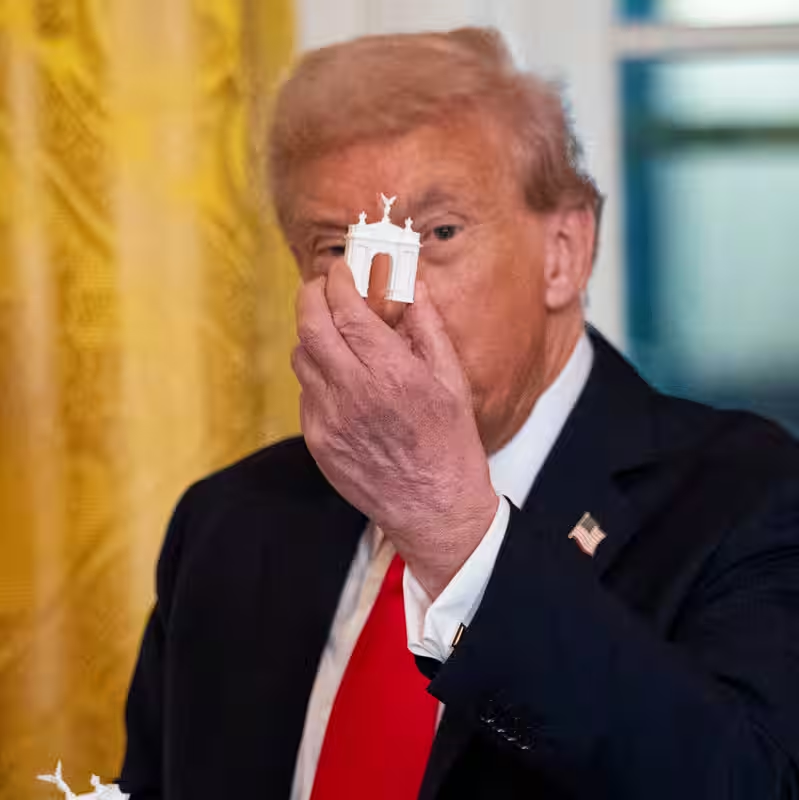Table of Contents
- A Presidential Monument in the Making?
- Design and Location of Trump’s Arch
- Who Is the Arch For?
- Legal and Funding Hurdles
- Public and Expert Reactions
- Sources
A Presidential Monument in the Making?
President Donald Trump has unveiled plans for a new triumphal arch in Washington, D.C.—a neoclassical structure inspired by Paris’s Arc de Triomphe—to mark the United States’ 250th anniversary in July 2026.
The proposal, revealed during a high-dollar donor dinner for the White House’s new $200 million ballroom, includes three scale models—small, medium, and large—with Trump favoring the largest. “They look good,” he said. “I happen to think the larger one looks, by far, the best.”
While the idea may sound grand, it faces steep legal, logistical, and financial challenges—and has already sparked debate over ego, legacy, and the future of the National Mall.
Design and Location of Trump’s Arch
According to renderings shared by the president and an illustration posted on social media, the Trump arch would be a marble monument at least 50 feet tall, featuring a gold, winged female statue atop its crown. Trump called the figure “Lady Liberty,” though experts note it more closely resembles Victoria, the Roman goddess of victory.
The proposed site is Memorial Circle—a roundabout directly across the Potomac River from the Lincoln Memorial and adjacent to Arlington National Cemetery. This location ensures the arch would dominate views along Arlington Memorial Bridge, a key ceremonial route into the capital.
The design appears to be the work of Harrison Design, a Washington-based architecture firm, though neither the firm nor the White House has confirmed involvement.
Who Is the Arch For?
When asked by a reporter who the arch honors, Trump gave a blunt answer: “Me—it’s going to be beautiful.”
Historically, triumphal arches—dating back to ancient Rome—commemorate military victories or national milestones. The Arc de Triomphe, for example, honors those who fought for France in the Napoleonic Wars. But Trump’s framing suggests a more personal monument, aligning with his broader aesthetic vision for Washington.
This isn’t the first time Trump has reshaped federal aesthetics. He’s already paved over the White House Rose Garden, added gold accents to the Oval Office, mandated Greco-Roman architecture for new federal buildings, and now seeks to imprint his legacy on the capital’s skyline.
Legal and Funding Hurdles
Building a major monument on federal land isn’t as simple as picking a spot and breaking ground. The proposed site falls within the “reserve” zone of the National Mall, where new memorials are generally prohibited under the Commemorative Works Act of 1986 to prevent visual clutter and preserve historic integrity.
Any new memorial must be authorized by Congress and undergo a multi-year review by agencies like the National Capital Planning Commission and the Commission of Fine Arts—both currently shuttered due to a government shutdown.
Moreover, funding remains unclear. While Trump hinted that leftover donations from the White House ballroom project could cover the arch, no official budget or donor list has been released. Congress has not allocated funds, and it’s uncertain whether lawmakers would support a monument widely perceived as self-aggrandizing.
Key Facts: Trump’s Proposed Arch
| Feature | Detail |
|---|---|
| Proposed Name | Not officially named; referred to as “triumphal arch” |
| Location | Memorial Circle, across from Lincoln Memorial |
| Height | At least 50 feet (based on renderings) |
| Top Feature | Gold, winged female statue (“Lady Liberty”) |
| Target Completion | July 2026 (U.S. Semiquincentennial) |
| Legal Pathway | Requires Congressional approval under Commemorative Works Act |
Public and Expert Reactions
Urban designers and historians have expressed concern. “This isn’t how we build national memory,” said Jason Montgomery, a Washington-based architect. “Monuments should reflect collective values, not individual vanity.”
Public opinion remains divided. Supporters praise Trump’s ambition to “beautify” D.C., while critics call the plan a vanity project out of step with democratic norms.
With the 2026 deadline looming and no formal approval process underway, many experts doubt the Trump arch will be built as envisioned. But even as a proposal, it has reignited debate about who gets to shape America’s symbolic landscape—and whose legacy endures.




